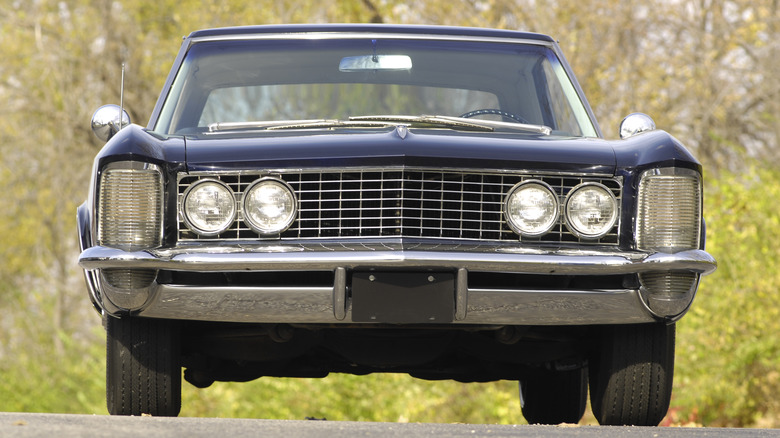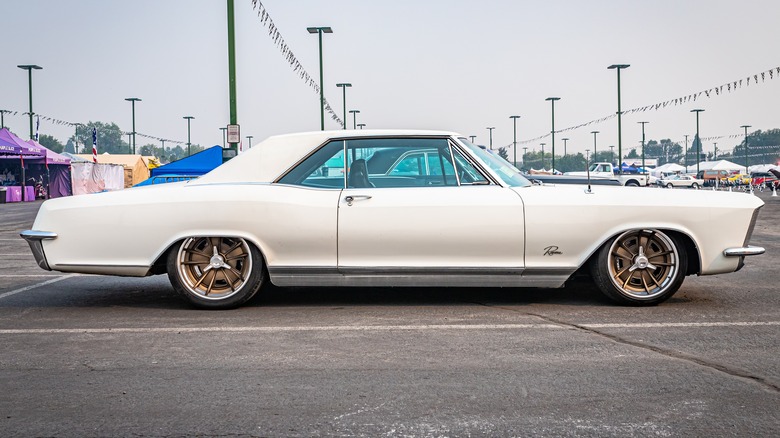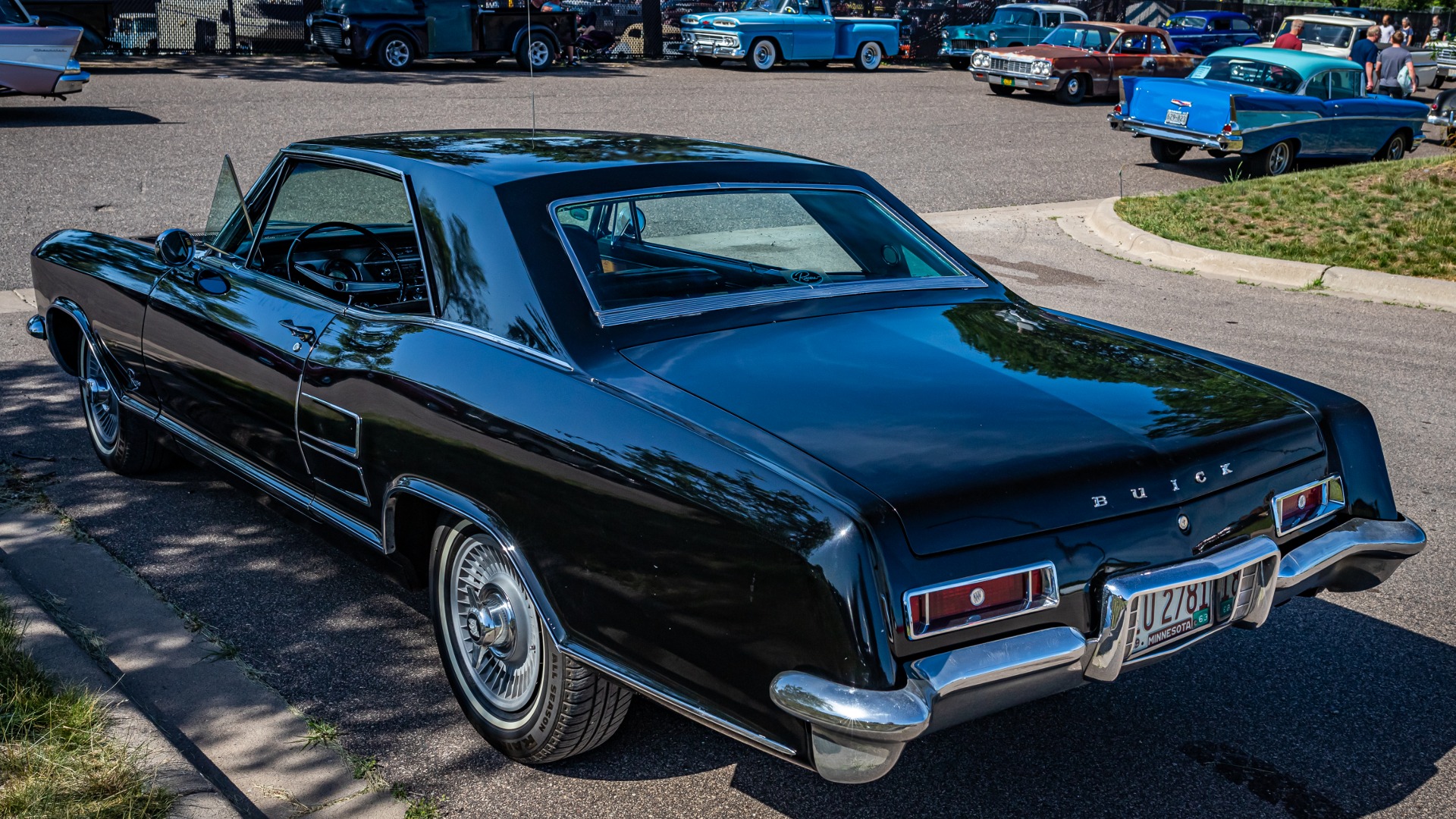The Buick Riviera: GM's Answer To The Thunderbird Was Originally A Cadillac
When the original Ford Thunderbird debuted at the 1954 Detroit Auto Show, it became more than a knee-jerk reaction to Chevrolet's Corvette sports car. It established a new "personal luxury" niche in the burgeoning auto segment, combining a muscle car's power and driving dynamics, a luxurious interior, and a sub-$3,000 base price. Ford sold 16,000 Thunderbirds in its maiden year, and this naturally got the attention of fellow American automaker General Motors (GM).
GM instructed its styling head, Bill Mitchell, to design a car that would lock horns with the popular Thunderbird. Inspired by the delectable coachwork bodies of late 1950s Rolls-Royce motor cars, Mitchell and GM designer Ned Nickles created a concept with razor-sharp styling cues: featuring a low-profile body, a distinctive egg-crate front grille, unique hidden headlights, and substantial vertically-stacked parking lights on the front fenders.
This new concept would later become the first-generation Buick Riviera. But before it entered production in 1963 as a Buick, GM's Oldsmobile, Pontiac, and Cadillac divisions had first dibs on what would redefine the personal luxury niche.
The Buick Riviera started life as a Cadillac concept car
Before the Riviera officially became a Buick, designer Ned Nickles christened the concept car "LaSalle II" for its vertical parking lights inspired by the front grille design of the 1939 Cadillac LaSalle. However, the GM Design crew renamed it the XP-715, but Cadillac's then-general manager Jim Roche had other things in mind.
Enlisting the help of the McCann-Erickson advertising agency, Buick general manager Ed Rollert and sales manager Roland Withers convinced the GM brass to produce the XP-715 under the Buick name, primarily using a mishmash of parts and components from GM's B-platform, but with bespoke body panels unique to Buick. If the luscious styling wasn't enough, the first-gen Riviera of 1963 has a 6.6-liter (401 cubic inch) 325-horsepower V8 and an optional 7.0-liter (425 cubic inch) V8 with 340 horsepower. Moreover, the Riviera gained a Super Wildcat 7.0-liter V8 with 360 horsepower in 1965.
On the luxury front, the Riviera featured leather-wrapped front and rear bucket seats, standard air-conditioning, wood trim, and a three-speed automatic gearbox. Buick sold 112,244 Rivieras from 1963 to 1965, but the sales figures were still behind the Thunderbird. GM redesigned the second-gen Riviera (1966 to 1970) with a more substantial and broader body, but the first-gen Riviera remains a style icon.


